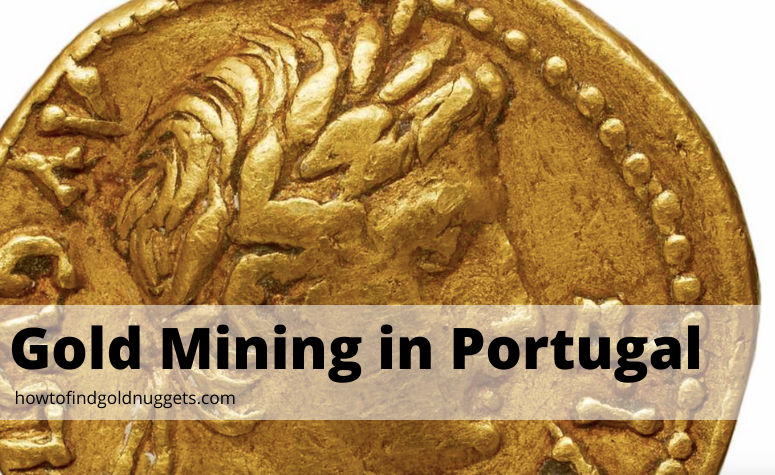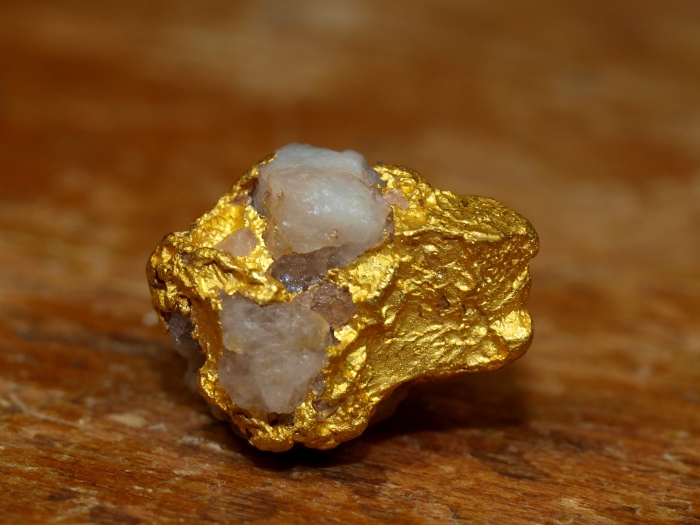
The Iberian Peninsula’s riches and opulence are extolled in Latin Literature, and it was continuously explored for its valuable mineral deposits. Today, abandoned mines from the Roman and pre-Roman eras can be found all across Portugal; most significant are the Tagus valley, Ceira Vally, and other areas of northern Portugal.
The region was once the center of gold production for the Roman empire. The northern part of Portugal produced tons of gold for hundreds of years, but the production ceased right after the Romans left. Gold mining saw a comeback in Portugal in the 1800s, but it diminished due to high production costs. The last commercial mine, ‘New Jales Mine,’ closed in 1992.
Today, Portugal is still considered a land of minerals and has a strong mining industry. In this article, we will explore the gold mining history of ancient and modern Portugal.
Gold Mining in the Roman Empire
The Romans invaded the Iberian Peninsula (Hispania) in the second century BC, and by 27 BC, they had divided it into four governorates. Modern Portugal was part of the ‘Lusitania’ province.
In Pre-Roman times, Lusitanians worked artisanal mining on the rich gold paleo placers or ancient alluvial ore. Around the start of the 1st century AD, the Romans began to exploit the auriferous deposits on Tagus River and Alva River and their tributaries. Several mines were established throughout the region in the next hundred years, and Lusitania became a major gold-producing province in Western Europe. Roman engineers improved the ancient alluvial mining techniques, introduced advanced aqueducts systems, improved open-pit mines, and started to dig deeper to find rich gold veins.
Portugal has several well-preserved ancient mining sites. Mining complexes like Sao Domingo, Escádia Grande Mine, Tresminas, Castromil gold mines, and many more give a glimpse of the mining techniques used by Romans. Researches have explored many of these sites and has estimated the total production from Portuguese mines to be around 9 tons of gold during the Roman period.
After the Romans left, gold mining came to a halt, and most mines were closed. Only the local people continued to work in small-scale mining, which was largely artisanal in nature. The condition continued for several centuries until the 1800s, when a few mining companies came forward to set up operations and re-explore the region’s potential.

Modern Gold Exploration in Portugal
In the mid-1800s, when the Industrial Revolution was in full swing, Portugal saw another wave of gold exploration. Although the focus remained on the existing Roman mines, several companies set up small-scale operations and explored the resources. The activity continued throughout the early 20th century, but production remained low because the existing small-scale mining techniques were not viable on a large scale. Few profitable sites that reopened faced severe backlash because of environmental damages. None of the companies sustained production for a long time, and finally, the last gold mine closed in 1992. We have listed a few important mines that operated in the 19th and 20th centuries.
Sao Domingos Mines:
For 400 years, the Romans mined gold in the Sao Domingo. The site was abandoned sometime during the fourth century AD. In 1854, an Italian miner reexamined it, and an English firm began mining here in 1856, but it mostly worked with copper ores. They converted the mine into an open-pit operation in 1867, which resulted in high leaching of sulfuric acid and air contamination, and forced its closure in 1866.
Castromil Mines:
Another ancient mining site where the Romans mined gold both by open digging and underground operations. Until the 19th century, local prospectors and a few mining companies continued to mine the area. However, in 1940, the exploration was closed entirely due to excessive lead and arsenic contamination of the groundwater.
Jales Mines:
Dating back to 1st century AD, Jales mines remained in operation until 1992. The mines cover a distance of four to five kilometers in the Vila Real region. According to estimates, 25 tons of gold were extracted from these mines. Similar to other mines, the Jales mines also faced environmental degradation. New Jales mines stopped production in 1992, mainly due to the high costs of mining, which made it non-profitable for the company.
Future of Gold Mining in Portugal
In 2012, the Portugal government granted an exploration permit to a Canadian mining company Colt Resources. The company carried out core sampling and exploration in the Boa Fé areas in the Évora region. According to the information available, the company reported 400 million USD worth of gold deposits.
The project is still in the developing process, but it faces backlash from the local population and environmentalists because of the potential impact on the region. Nevertheless, if all goes well, we’ll soon find the future of gold mining in Portugal.
The Ancient Roman Gold Mines in Spain
